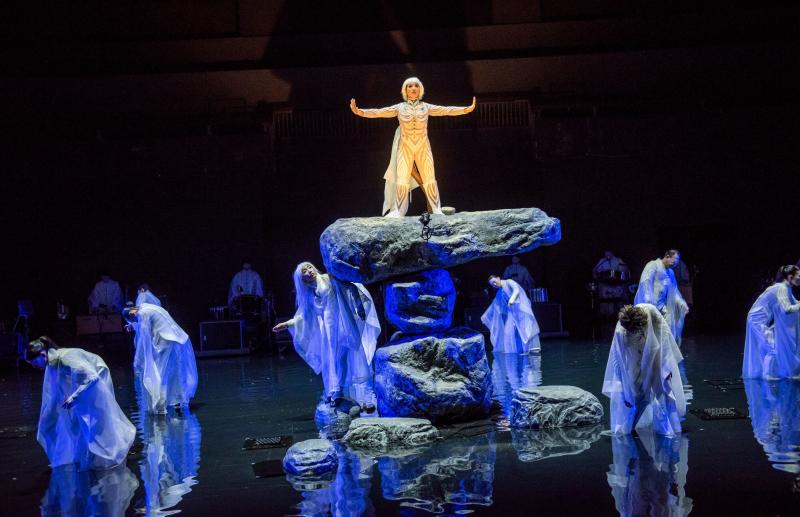Review: Satoshi Miyagi's Entrancing Staging of ANTIGONE Arrives From Japan
Even the most jaded New York playgoers who may start feeling a bit blasé about entering a theatre and seeing a large pool of water on the stage (Jeremy O. Harris' DADDY and Lucas Hnath's RED SPEEDO are two recent examples) will undoubtedly be intrigued by the sumptuous display of aquatic symbolism greeting them at the Park Avenue Armory for director Satoshi Miyagi's entrancing staging of Shigetake Yaginuma's translation of Sophocles' Antigone.

In a production originally seen at Japan's Shizuoka Performing Arts Center, the entire playing area is covered by designer Junpei Kiz's 18,000 gallon wading pool containing various formations of boulders and rocks, where the pre-show ritual has members of the 29-member company, dressed in flowing white by designer Kayo Takahashi quietly promenading, ankle-high in water. There's the suggestion this would represent the rivers that, in Greek mythology, separate the living from the dead.
An ensemble of percussionists, who play Hiroko Tanakawa's minimalist score, address the audience in English from the dry ledge in a prologue that humorously provides a bit of background on the ancient Greek playwright's story of the rebellious daughter of tyrannical King Creon of the House of Thebes.

From there on, the proceedings are spoken in Japanese (the projected English translation could stand to be a bit larger and sharper) with each character played by both a speaker, who kneels in the water, and by a movement specialist, allowing for the specifics of language to contrast with the highly stylized physical displays of emotion.
For those who don't understand Japanese, the text may eventually become inconsequential, as the attention-grabbing visuals, incorporating aspects of Bunraku and Noh theatre, as well as shadow play, grab attention away from the desire to read.
To the western viewer, Miyagi's creation may seem more like ritualistic pageantry, presented at a meditative pace, than storytelling theatre, but the gentle spectacle is nevertheless quite engaging and lovely to behold.
Reader Reviews



